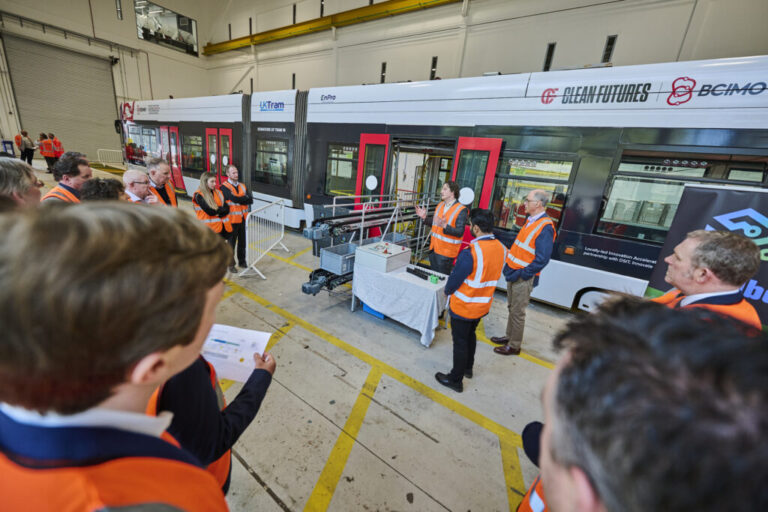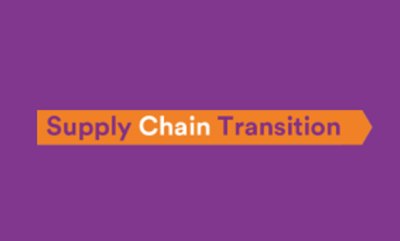Another booked out Innovation Policy and Practice event on 30th January, kindly hosted by Trowers & Hamlins Birmingham office, focused on the delivery of innovation in the West Midlands Local Industrial Strategy (WMLIS). Julia Goldsworthy, Director of Strategy at West Midlands Combined Authority (WMCA), and chair of the event, began by emphasising the importance of innovation in driving economic prosperity, and the WMCA’s keenness to support demand led innovation activities in the region.
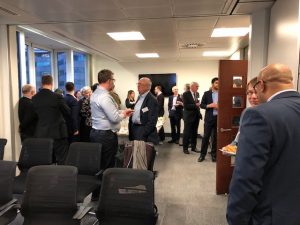
Mike Wright, Chair of the West Midlands Innovation Board then kicked off the presentations, noting that innovation is in the West Midlands DNA, with a desire to innovate and to improve people’s lives being a defining characteristic of the West Midlands for hundreds of years. He showed how the West Midlands (WM) innovation ecosystem consists of a sophisticated mix of universities, anchor companies, R&D facilities, knowledge networks and a skilled workforce.
Mike highlighted the four major market opportunities identified in the WM Local Industrial Strategy (WMLIS) where existing business and innovation strengths meet global trends and new markets for products, processes and services: data driven health and life sciences; future of mobility; modern services; creative content, techniques and technologies.
The ambitious plans set out in the WMLIS include growing the regional economy by £16.9bn while creating 500,000 jobs by 2030. Innovation has a clear role in helping to achieve this.
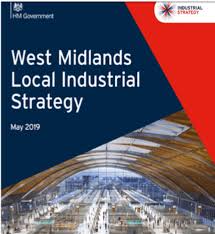
The WMCA has put in place resources to support the WM Innovation Board, enabling them to lead the implementation of the Innovation actions in the WM LIS, including a collaborative West Midlands Innovation Programme (WMIP). Supported by the Innovation Alliance for the West Midlands (IAWM), WMIP will champion demand-led business innovation driven by our region’s market opportunities, and will deliver activities relating to: innovation networks and linkages; investment programmes; talent; intelligence and culture.
Closing his presentation, Mike spoke about the need for the West Midlands to punch above our weight internationally, noting that global companies scan the world for innovation hubs to complement their R&D centres.
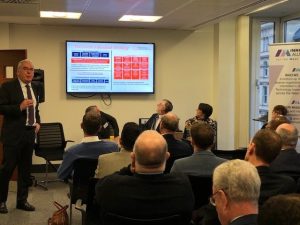
Three short presentations followed that illustrated activities underway or planned as part of WMIP:
- Pam Waddell, Director of IAWM, reminded the audience that IAWM is a bottom-up alliance of diverse organisations active or interested in science and technology based innovation across the West Midlands. A recent survey shows we are succeeding in our two core objectives, building and maintaining a thriving innovation ecosystem (87% positive responses), and stimulating and catalysing a pipeline of innovation activity (92% positive). More on the survey can be found here. One of IAWM’s role in WMIP will be to continue running a range of networks and events to strengthen the WM innovation ecosystem, of which this event was one! IAWM will also work with sector support organisations to facilitate a business-facing virtual innovation team, to further extend networks and build the ecosystem. Pam also spoke above IAWM’s work to catalyse pilot collaborative innovation ecosystem and cross-sector projects, which neatly led on to two examples in the GRID and CITEC.
- Paul Adams of Goldfish Ventures outlined the plans to develop the Grid, a digital innovation platform for SMEs and entrepreneurs. The Grid will function as an innovation and opportunities exchange for founders ready to scale their start-up to meet like-minded entrepreneurs and find support programmes, as well as posting corporate challenges from leading names in the region which could lead to investment or supplier contracts. An MVP is expected to be ready by May 2020. In the meantime Paul is keen to engage with communities of SMEs, the start-up support ecosystem, and large organisations with innovation challenges; judging by the queue of people waiting to talk to Paul at the end of the event, the Grid has certainly tapped into a need!
- Finally, Andrew Mair, Chief Executive of the Midlands Aerospace Alliance spoke about cross-sector supply chain innovation, and the Cross-Industry Technology Exploitation in Clusters (CITEC) project. Andrew gave some great examples of what he meant by cross-sector technology exploitation, including sugar cane waste from the food industry creating less hazardous, ecologically sustainable and fire-resistant resins for composite aircraft interiors. WMIP, will enable a pilot project to adapt the aerospace experience of exploiting cross-sector technology, with projects across transport sectors (automotive, motorsport, rail, aerospace), supported by end users and cluster bodies.
With an audience of predominantly large and small companies, there followed a lively question and answer session, confirming the importance of demand led innovation, stressing the role of the public sector in using its own procurement to encourage innovation, and the importance of ensuring the skills of the region were appropriate to enable the innovation ambitions of the WMLIS. Julia Goldsworthy assured everyone that the various WMCA strategies (eg innovation and skills) are working closely together, while highlighting the great work going on in the region to national government. She closed, emphasising the huge opportunity that supporting innovation across the region represents, addressing market opportunities using our core innovation strengths, encouraging innovation up and down supply chains and across sectors, and addressing key challenges.
Slides from the event are available here. We look forward to seeing you at the next Innovation & Policy Event on 2nd April.
Jane Holmes, IAWM


